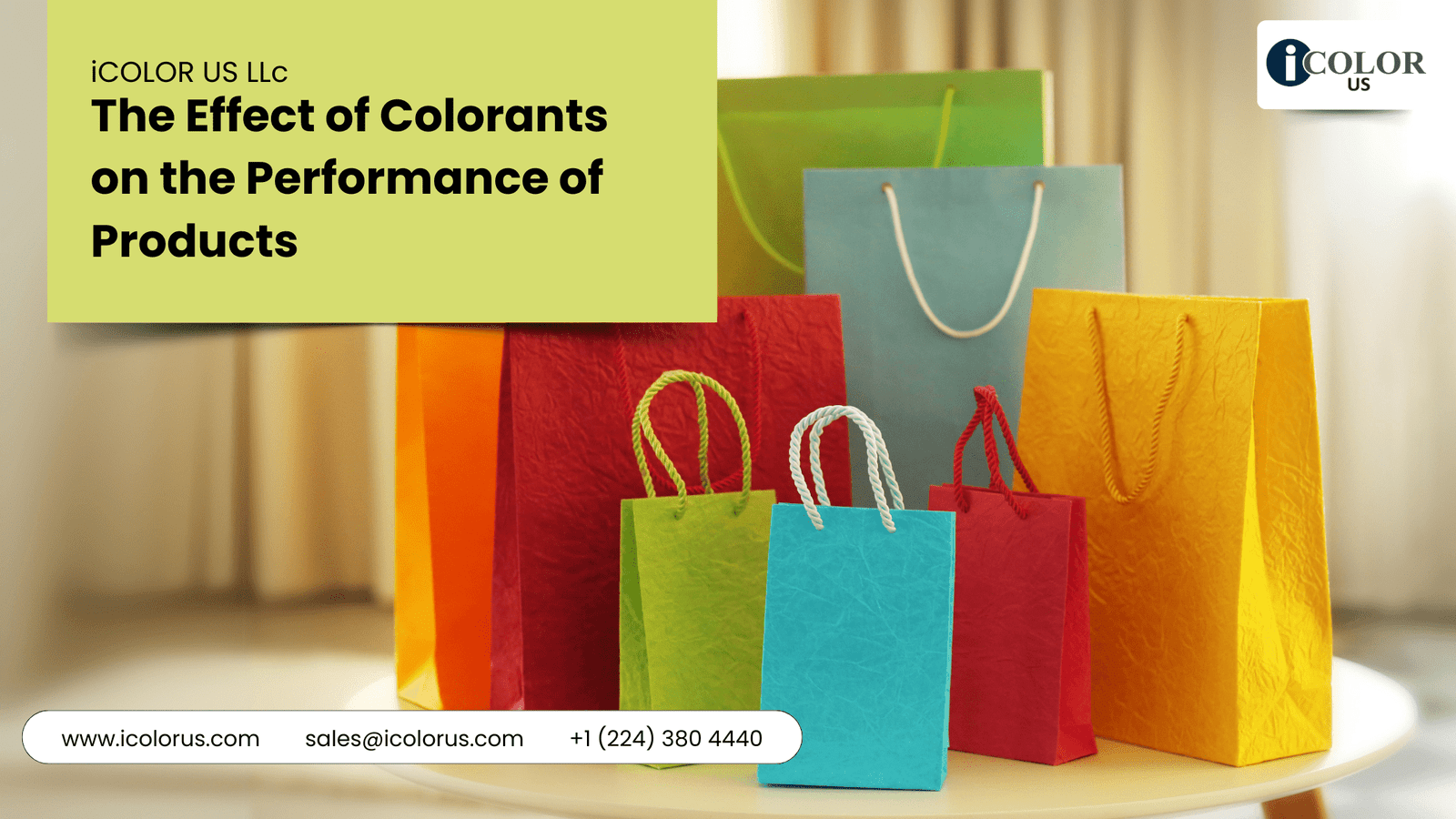Impact of Colorants on Product Performance
Colorants play a crucial role in the modern consumer market, influencing everything from the appeal of food to the effectiveness of pharmaceuticals. This article explores the multifaceted impact of colorants on product performance, delving into their psychological, practical, and environmental effects.
Understanding Colorants
Definition of Colorants
Colorants are substances that impart color to a material or product. They are used in various industries to enhance visual appeal, provide functional benefits, and influence consumer perception.
Types of Colorants
Natural Colorants
Natural colorants are derived from plants, animals, or minerals. Examples include beet juice for red coloring and turmeric for yellow. These colorants are often perceived as safer and more environmentally friendly.
Synthetic Colorants
Synthetic colorants are man-made and often provide more vibrant and consistent colors. They are commonly used in industries where precise color matching and stability are crucial, such as in textiles and packaging.
Role of Colorants in Consumer Perception
Psychological Impact of Colors
Colors can evoke emotions and influence moods. For instance, red can stimulate appetite, making it popular in food packaging, while blue can create a sense of trust and calm, often used in corporate branding.
Influence on Buying Decisions
Consumers often make purchasing decisions based on the color of a product. A visually appealing product is more likely to catch the consumer’s eye, making colorants a vital aspect of marketing strategies.
Colorants in Food and Beverages
Enhancing Visual Appeal
The appearance of food and beverages can significantly affect their perceived taste and quality. Colorants are used to make products look fresher and more appealing, which can enhance the overall eating experience.
Impact on Taste Perception
Interestingly, the color of food can also influence its perceived taste. For example, people might perceive a yellow beverage as being lemon-flavored, even if it isn’t. This psychological effect highlights the importance of color in food products.
Regulatory Considerations
Food colorants are subject to strict regulations to ensure they are safe for consumption. Regulatory bodies like the FDA in the United States set guidelines for the use and labeling of color additives in food.
Colorants in Cosmetics
Importance in Makeup and Skincare
Colorants are essential in cosmetics to provide a wide range of shades and tones. From lipsticks to eyeshadows, the right color can enhance natural beauty and provide a means of self-expression.
Safety and Allergic Reactions
The safety of cosmetic colorants is paramount, as these products are applied directly to the skin. Some synthetic colorants can cause allergic reactions, prompting a trend towards natural and hypoallergenic alternatives.
Trends in Cosmetic Colorants
There is a growing demand for clean beauty products, which are free from harmful chemicals and synthetic colorants. Consumers are increasingly opting for products with natural ingredients, driving innovation in the cosmetic industry.
Colorants in Textiles
Dyeing Techniques and Innovations
The textile industry uses various dyeing techniques to achieve desired colors. Innovations like digital printing and eco-friendly dyes are transforming how fabrics are colored.
Environmental Impact
Traditional dyeing processes can be harmful to the environment, involving toxic chemicals and large amounts of water. Sustainable practices and the use of natural dyes are gaining traction as the industry seeks to reduce its ecological footprint.
Durability and Performance
The durability of textile colorants is crucial for maintaining the appearance and quality of fabrics. Colorants must withstand washing, light exposure, and wear to ensure the longevity of the product.
Colorants in Packaging
Branding and Marketing Strategies
Color plays a significant role in branding and packaging. Vibrant, eye-catching colors can attract consumers and communicate brand identity effectively. Packaging color can also influence the perceived quality and functionality of a product.
Shelf Life and Product Preservation
Certain colorants can protect products from light and oxygen, thereby extending shelf life. These functional colorants are particularly useful in packaging food and pharmaceuticals.
Eco-Friendly Packaging Solutions
There is a growing movement towards sustainable packaging, using biodegradable materials and eco-friendly colorants. These solutions aim to reduce environmental impact while maintaining product integrity.
Colorants in Pharmaceuticals
Role in Medication Identification
Colorants help in identifying different medications, making it easier for healthcare providers and patients to distinguish between various drugs. This visual differentiation is crucial for preventing medication errors.
Stability and Efficacy Concerns
The stability of colorants in pharmaceuticals is vital to ensure that the medication remains effective throughout its shelf life. Some colorants can degrade over time, potentially affecting the drug’s potency.
Regulatory Standards and Compliance
Pharmaceutical colorants must comply with stringent regulatory standards to ensure they are safe and do not interfere with the medication’s effectiveness. Regulatory bodies like the FDA oversee these standards.
Technological Advancements in Colorants
Nano-Colorants
Nano-colorants are being developed to provide more vibrant and durable colors. These tiny particles offer unique properties that can enhance the performance of colorants in various applications.
Smart and Functional Colorants
Innovations such as thermochromic and photochromic colorants change color in response to temperature or light, offering new possibilities for interactive and functional products.
Future Trends and Predictions
The future of colorants lies in sustainable and high-performance solutions. Advances in technology and increased consumer awareness are driving the development of colorants that are both effective and environmentally friendly.
Environmental and Health Implications
Toxicity and Safety Concerns
Some colorants, particularly synthetic ones, can be toxic and pose health risks. It’s essential to evaluate the safety of these substances and explore safer alternatives.
Sustainable Alternatives
Natural and biodegradable colorants are gaining popularity as industries strive to reduce their environmental impact. These alternatives can offer similar performance benefits without the associated risks.
Impact on Human Health
Long-term exposure to certain colorants can have adverse health effects. Ensuring the safety of these substances through rigorous testing and regulation is crucial for protecting public health.
Case Studies
Successful Use of Colorants in Products
Many companies have successfully used colorants to enhance their products. For example, the vibrant colors of M&M’s candies are achieved through a precise combination of colorants, making them instantly recognizable and appealing.
Failures and Lessons Learned
There have also been instances where the use of colorants has led to product recalls and consumer backlash. Learning from these failures is essential for developing safer and more effective colorants.
Consumer Awareness and Education
Reading Labels and Ingredients
Educating consumers on how to read labels and understand ingredients can help them make informed decisions. Transparency in labeling is key to building trust and ensuring safety.
Advocacy for Transparency
Advocating for greater transparency in the use of colorants can lead to better regulatory practices and safer products. Consumers have the power to drive change by demanding clear information and safer alternatives.
Conclusion
Colorants are an integral part of modern products, influencing everything from aesthetics to functionality. While they offer numerous benefits, it’s important to consider their safety and environmental impact. By embracing sustainable practices and advancing technological innovations, industries can harness the power of colorants responsibly.





